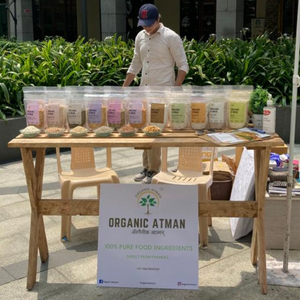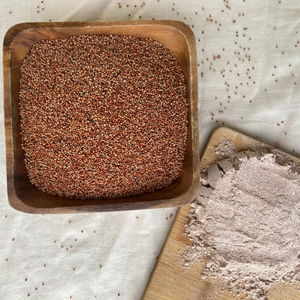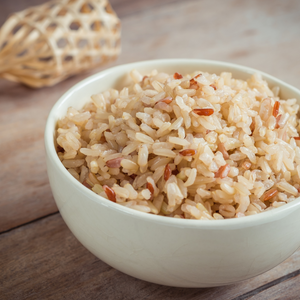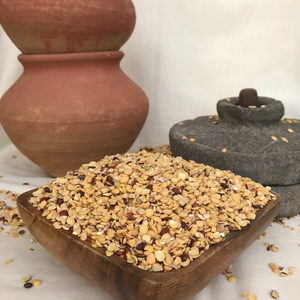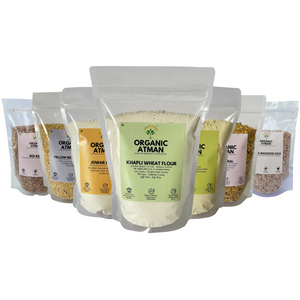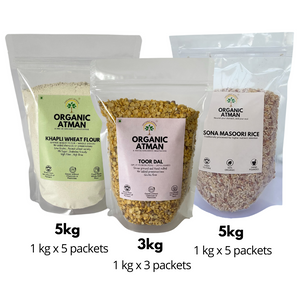Are you looking to add a nutritious twist to your meals? Look no further than Bansi Wheat, India's ancient super-grain that is making a comeback in modern kitchens. Packed with essential nutrients and health benefits, Bansi Wheat is a versatile ingredient that can elevate your culinary creations. Let’s unravel why this humble grain deserves to be in your pantry.
What makes Bansi Wheat so special?
Bansi Wheat, also known as Durum wheat (Triticum durum) or Indian wheatgrass , is a nutrient-dense grain that has been cultivated in India for centuries. Bansi Wheat is sibling to varieties like Kalibal, Khapli wheat, boasts a radiant golden hue and a delightful nutty taste. It is rich in fiber, protein, vitamins, and minerals, making it a powerhouse of nutrition. Whether you are looking to boost your energy levels or improve your digestion, Bansi Wheat has got you covered.
Imagine a wheat variety that’s been nourishing generations since ancient times—Bansi wheat is exactly that! Unlike modern hybrid strains, Bansi wheat is minimally processed, retaining its nutrient-rich bran and germ. Farmers have lovingly preserved this grain using time-tested methods, making it a living link to India’s agricultural roots.
Fun fact: Its name “Bansi” is said to echo the rustic charm of bamboo flutes (bansuri), symbolizing simplicity and purity.
A Grain with 7,500 Years of History
Bansi’s story begins in the Eastern Mediterranean, where domesticated hulled Emmer wheat (like Khapli) was selectively bred 7,500–6,200 years ago to create early Durum varieties. By 2,500 years ago, Durum wheat had largely replaced Emmer, becoming a staple for its hardiness and versatility.
Fast-forward to early 20th-century India: 10 distinct Durum varieties, including Bansi, thrived in Indian fields. Farmers prized them for their robust yield, nutrient density, and unmatched flavor in rotis. But colonial-era British mills favored soft bread wheat for industrial processing, sidelining hardy Durum varieties—except for exports to Mediterranean regions for pasta-making. Today, Bansi survives as a rare heirloom, cherished by traditionalists and health enthusiasts alike.
Why Bansi Wheat Beats Modern Wheat?
Modern Durum wheat has been known for fluffy breads and quick-rising doughs. Here’s how Bansi stands apart:
-
Gentle on the Gut: Though rich in gluten and protein, Bansi’s hard endosperm and less elastic gluten network make its nutrients slower to release. This complex protein structure is easier to digest, reducing bloating and discomfort.
-
Nutrient Powerhouse: Packed with protein, fiber, and minerals, it’s a natural upgrade from refined grains.
-
Perfect for Traditional Cooking: Its “weak” gluten (by modern standards) makes it ideal for rotis, pasta, and semolina dishes—think fluffy chapatis or hearty upma!
Fun Fact: Bansi’s stubborn gluten might frustrate a baker, but it’s a blessing for pasta lovers and roti-makers!


How to Use Bansi Wheat??
There are endless possibilities when it comes to using Bansi Wheat in your cooking. You can use Bansi Wheat flour to make chapatis, rotis, or bread. You can also add it to soups, stews, salads, or even smoothies for an extra nutritional punch. The options are truly limitless!
-
Golden Rotis: Craft soft, aromatic chapatis that stay tender longer.
-
Homemade Pasta: Roll out rustic noodles or couscous with its coarse semolina.
-
Savoury Upma: Swap regular rava for Bansi semolina for a protein-packed breakfast.
-
Ancient Grain Bowls: Cook whole Bansi wheat like farro and toss with roasted veggies.
Pro Tip: Soak the grains overnight for quicker cooking and better digestibility!
What are the health benefits of Bansi Wheat?

-
Digestive Wellness: Its slow-release gluten and fiber support gut health without the strain of modern wheat.
-
Balanced Blood Sugar: Low glycemic index keeps energy steady—no mid-morning crashes!
-
Heart-Friendly: Magnesium and antioxidants promote healthy circulation and blood pressure.
-
Protein Punch: A boon for vegetarians and active lifestyles.
(Sources: Historical agronomy studies, traditional dietary practices)
Why Choose Heirloom Bansi Over Modern Wheat?
-
No Compromises: Modern Durum is bred for convenience, not nutrition. Bansi retains its original DNA—and benefits.
-
Supports Biodiversity: Growing heirloom grains protects agricultural heritage and soil health.
-
Natural by Legacy: Traditionally farmed without synthetic inputs, it’s a clean, sustainable choice.
Buy Bansi Whole Wheat and Bansi Wheat Flour at Organic Atman
You can easily find Bansi Wheat at your local health food store or online. Look for organic, non-GMO varieties to ensure you are getting the best quality product. At Organic Atman, it makes easy as they offer:
Perfect for soft rotis, parathas, and baked goods.
Ideal for sprouting, porridge, or grinding fresh flour at home.
Why Choose Organic Atman?

1. 100% Organic & Chemical-Free
Organic Atman sources Bansi wheat directly from small farmers who use traditional, chemical-free farming practices. No synthetic pesticides, GMOs, or artificial additives—just pure, unadulterated grain.
2. Preserves Heritage Farming
By supporting Organic Atman, you help sustain India’s heirloom crops and empower farming communities to keep ancient agricultural traditions alive.
3. Uncompromised Quality
Their Bansi wheat is stone-ground to retain maximum nutrition, flavor, and natural texture. Every batch is rigorously tested for purity and freshness.
4. Sustainable & Ethical
From seed to shelf, Organic Atman prioritizes eco-friendly packaging, fair wages for farmers, and a transparent supply chain.
5. Rave Reviews
Customers love the aroma and soft texture of their Bansi atta—perfect for guilt-free, wholesome meals!






